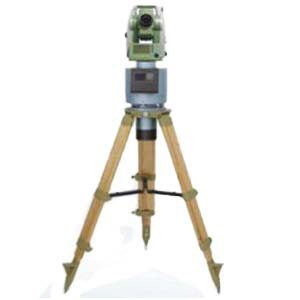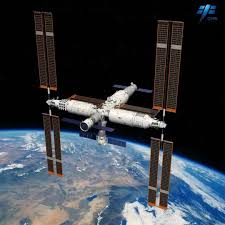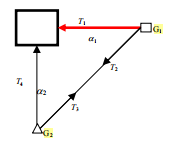There are many ways to classify fiber optic gyroscopes. According to the working principle, it can be divided into three types: interference type, resonant type and stimulated Brillouin scattering fiber gyro. Among them, the interferometric fiber optic gyroscope is the first generation of fiber optic gyroscope, which uses multi-turn fiber coil to enhance the Sagnac effect. It is currently the most widely used; it can be divided into open-loop fiber gyroscope and closed loop according to different electric signal processing methods. Fiber optic gyroscopes, in general, closed-loop fiber optic gyroscopes have higher precision due to closed-loop control; they can be divided into single-axis fiber gyroscopes and multi-axis gyroscopes according to structure, among which three-axis fiber gyroscopes have volume Small, measurable spatial position and other advantages are an important development direction of fiber optic gyroscopes.
1.What is a fiber optic gyroscope? What are its applications in life?
A fiber optic gyroscope (FOG) is an angular velocity sensor based on the Sagnac effect, which detects angular velocity by measuring the phase difference of light traveling through an optical fiber. Compared with the traditional mechanical gyroscope, fiber optic gyroscope has the advantages of small size, light weight, high precision and good reliability, so it has been widely used in many fields.
In life, fiber optic gyro is mainly used in the field of navigation, such as car navigation, ship navigation, aircraft navigation and so on. Fiber optic gyroscopes can provide high-precision angular velocity measurements to help navigation systems more accurately determine the position and direction of a vehicle, boat or aircraft. In addition, fiber optic gyro can also be used in industrial control fields, such as robot attitude control, motion control of industrial machine tools, etc. In these applications, fiber optic gyroscopes can help achieve high-precision motion control and improve production efficiency and quality.
In addition, fiber optic gyro has also been widely used in the military field, such as missile guidance, spacecraft attitude control and so on. In these applications, the high accuracy and reliability of fiber optic gyroscopes are crucial. In general, the fiber optic gyro is a very important sensor, its application field is constantly expanding, for our life and work to bring a lot of convenience.
2.How does a fiber optic gyroscope work?
The working principle of a fiber optic gyroscope is based on the Sagnac effect. In simple terms, the Sagnac effect means that when light travels in a closed optical path, the phase of the light changes if there is an angular velocity of rotation.
In a fiber optic gyroscope, light from a light source passes through a coil of fiber and forms two beams of light in the fiber, which travel in opposite directions. When a fiber optic gyroscope spins, the phase of the two beams of light differs due to the Sagnac effect. By detecting this phase difference, the rotation angular speed of the fiber optic gyroscope can be calculated.
In order to detect phase differences, interferometers are usually used in fiber optic gyroscopes. The interferometer can convert the phase difference of two beams of light into the change of light intensity, so as to measure the rotational angular velocity. In practical applications, the fiber optic gyroscope also needs to carry out temperature compensation, polarization control and other measures to improve the measurement accuracy and stability.
The working principle of fiber optic gyroscope is relatively complicated, but its high precision and high reliability make it widely used in many fields. In the future, with the continuous development of technology, the performance of fiber optic gyro will continue to improve, bringing convenience to more fields.
3.What factors will affect the use of fiber optic gyroscopes? How to improve its measurement accuracy?
The measurement accuracy of fiber optic gyroscope will be affected by many factors during its use. Here are some common contributing factors:
Temperature: Changes in temperature can cause changes in the length and refractive index of the fiber, which affects the speed and phase of light propagation. Therefore, the fiber optic gyroscope needs temperature compensation to reduce the influence of temperature on the measurement accuracy.
Vibration: Vibration will change the optical path of the fiber optic gyroscope, which will affect the measurement of the phase difference. In order to reduce the impact of vibration, vibration reduction measures can be adopted, such as using shock absorbers, increasing the stiffness of the structure, etc.
Magnetic field: The magnetic field will change the polarization state of the light in the fiber, which will affect the output of the interferometer. In order to reduce the influence of magnetic fields, magnetic shielding technology can be used or diamagnetic fiber can be used.
Light source stability: the power fluctuation and wavelength drift of the light source will affect the measurement accuracy of the fiber optic gyroscope. Therefore, it is necessary to select a stable light source and control the temperature and power of the light source.
Fiber loss: The loss of the fiber will lead to the attenuation of the optical signal, which will affect the measurement accuracy. In order to reduce the impact of fiber loss, it is necessary to select low-loss fiber, and optimize the fiber connection and packaging.
In order to improve the measurement accuracy of the fiber optic gyroscope, the following measures can be taken:
Optimizing the design of the fiber optic gyroscope: the sensitivity and stability of the fiber optic gyroscope can be improved by reasonably designing the fiber winding structure and optical path layout.
The use of high-precision detection technology: for example, the use of high-resolution photodetectors, advanced signal processing algorithms, etc., can improve the measurement accuracy of phase difference.
Error compensation: According to the specific use of the environment and conditions, the temperature, vibration, magnetic field and other factors for error compensation to improve the measurement accuracy.
Multi-axis measurement: Using multiple fiber optic gyroscopes for multi-axis measurement can improve the measurement accuracy and reliability of the system.
Regular calibration and maintenance: Regularly calibrate and maintain the fiber optic gyro to ensure that it is in good working condition, thereby improving the measurement accuracy.
In addition, with the continuous progress of technology, new optical fiber materials, light sources and detection technologies can be used to further improve the measurement accuracy and performance of the fiber optic gyroscope. At the same time, in practical applications, it is also necessary to choose the right fiber optic gyroscope according to the specific needs and environment, and carry out reasonable installation and use to give full play to its advantages.
Ericco's fiber optic gyroscopes have long life and medium accuracy, such as ER-FOG-50, ER-FOG-60 is our very hot selling fiber optic gyroscopes, if you are interested in our products, please feel free to contact us.





.jpg)
